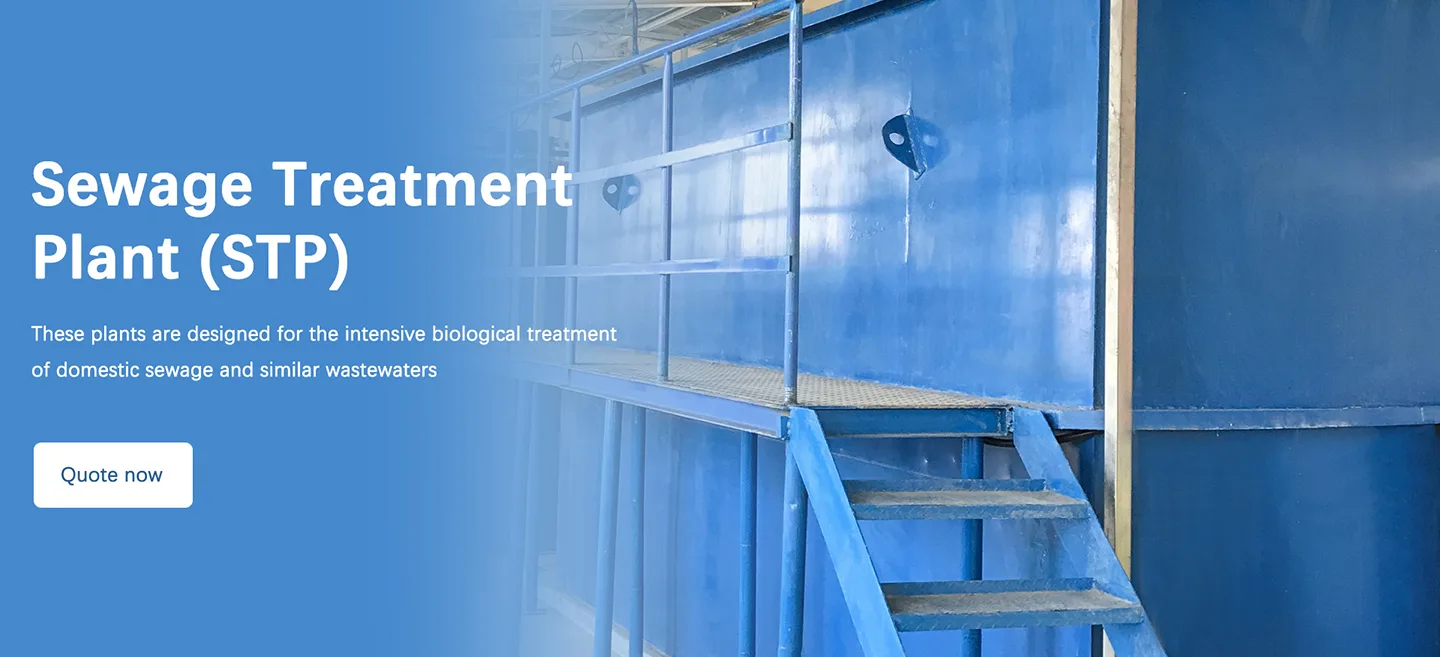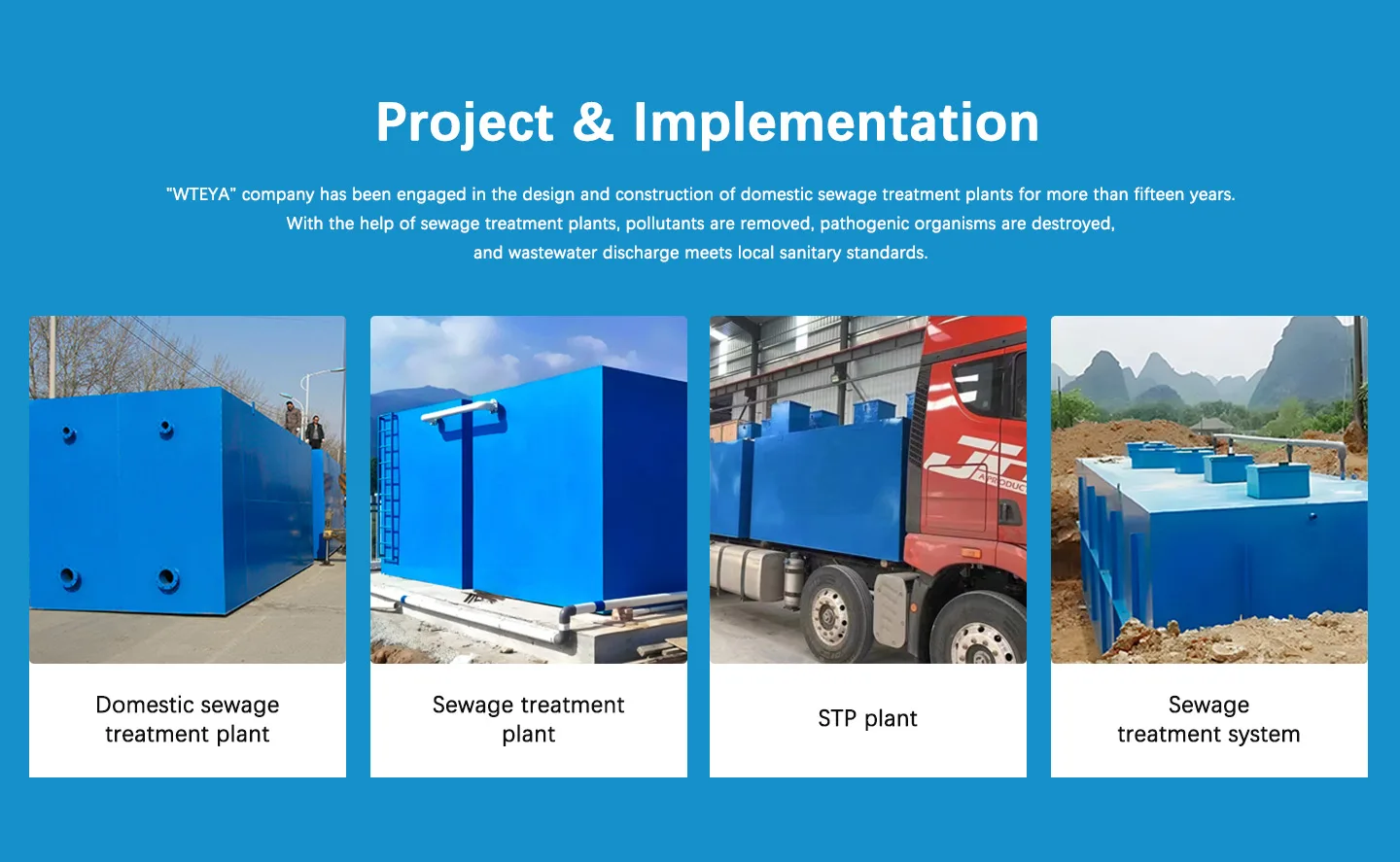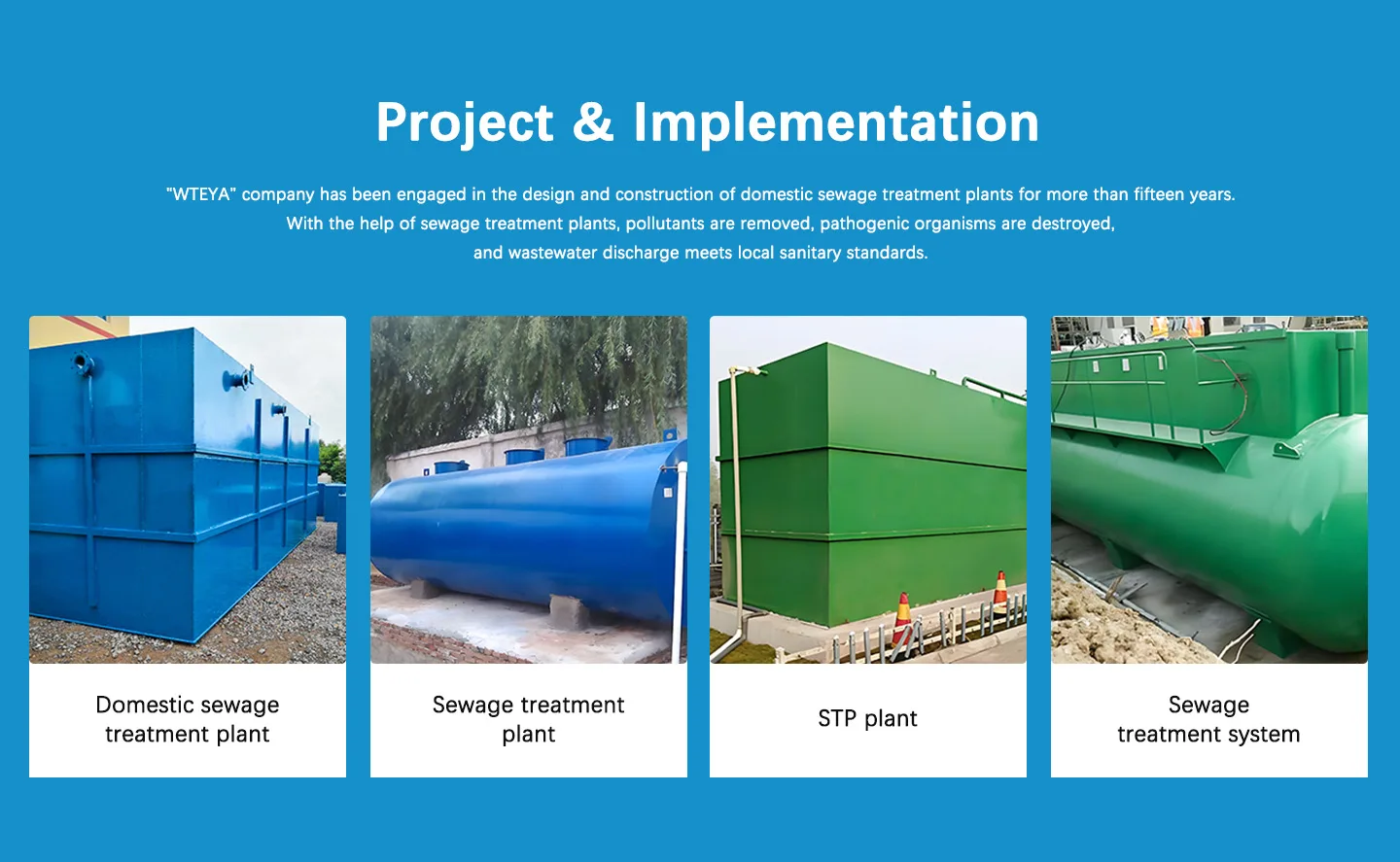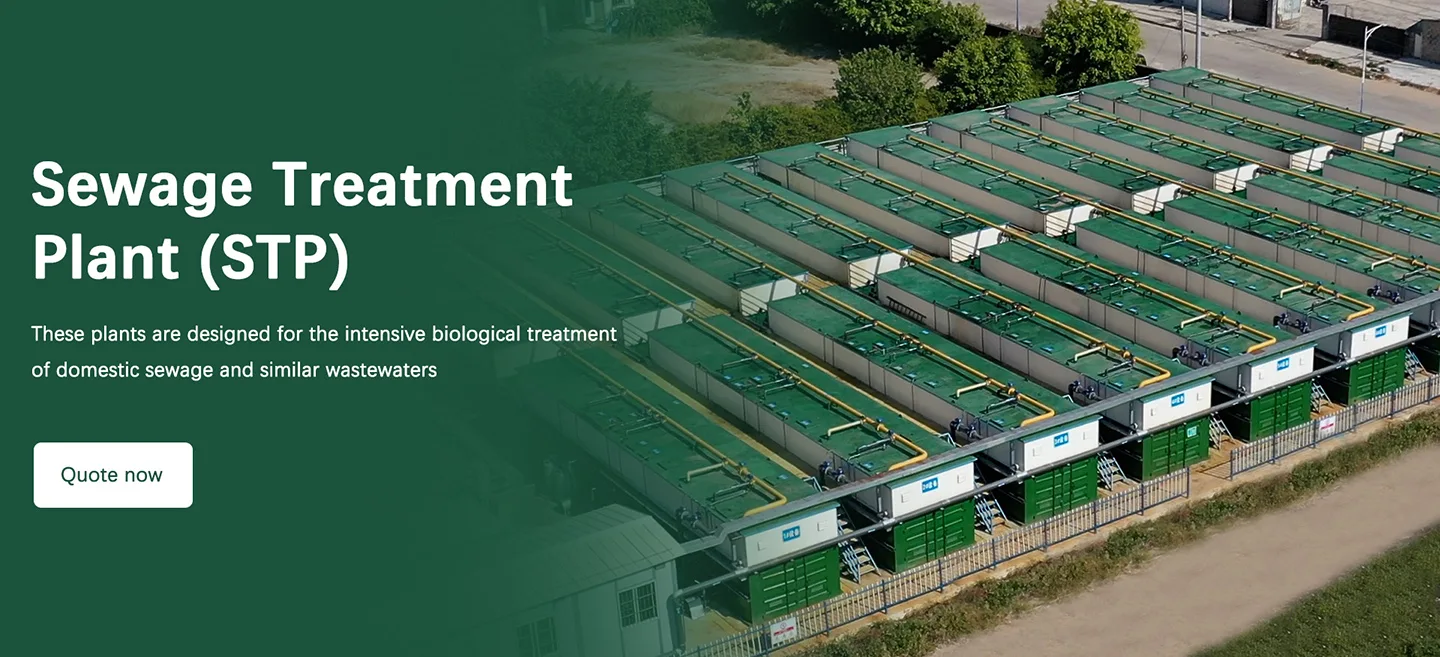How Does a Sewage Treatment Plant Work?
A sewage treatment plant (STP) plays a vital role in protecting the environment by treating wastewater so that it meets discharge standards. Sewage treatment plants are designed to remove contaminants from domestic, industrial, and commercial wastewater, ensuring the water is clean enough to return to water bodies or be reused. The process follows several stages, including physical, biological, and chemical treatments, which work together to clean the water and meet environmental standards. In this article, we will explore how a sewage treatment plant works, what technologies are involved, and why these systems are vital to modern society.
Main Stages of Sewage Treatment: From Intake to Discharge
Sewage treatment plants operate systematically through various stages, each designed to remove specific types of pollutants. Understanding these stages helps illustrate the complexity and importance of wastewater treatment.
Preliminary Treatment: Removing Large Debris
The first step in any sewage treatment plant is preliminary treatment, where large materials such as plastics, rags, and grit are removed from the wastewater. This phase ensures that the rest of the treatment process runs smoothly by preventing damage to sensitive equipment downstream. Mechanical screens and grit chambers are used in this stage to filter out these larger particles. Removing these materials early on is crucial in preventing blockages and equipment wear, which could lead to costly repairs or downtime.
Preliminary treatment components:
- Screens: Used to remove large debris like plastics and textiles.
- Grit Chambers: Separate heavier particles such as sand and gravel to protect pumps and other machinery.
- Sedimentation Tanks: Allow suspended solids to settle out of the wastewater.
Primary Treatment: Settling Suspended Solids
Once large debris has been removed, the wastewater moves into primary treatment. In this stage, the water is slowed down, allowing heavier solids to settle to the bottom of large tanks (called sedimentation tanks). The settled solids are known as sludge, while the lighter materials that float, like oils and grease, are skimmed off the top. This phase significantly reduces the amount of suspended solids in the wastewater, preparing it for biological treatment.
Key elements of primary treatment:
- Primary Settling Tanks: Large basins where sludge settles and is removed for further treatment.
- Skimmers: Devices that remove oils and grease from the surface of the water.
- Sludge Handling: The settled solids, or sludge, are often treated separately through processes like anaerobic digestion.
Secondary Treatment: Biological Treatment
Secondary treatment is where the majority of the contaminants are removed through biological processes. In this phase, microorganisms play a crucial role in breaking down organic matter in the sewage. Sewage treatment plants often use an activated sludge process or biofilm methods (such as MBR membrane bioreactors) to facilitate the breakdown of organic pollutants. Oxygen is introduced into the system to support the growth of these microorganisms, which feed on the organic material, converting it into simpler substances. Biological treatment technologies:
- Activated Sludge Process: A method where oxygen is pumped into aeration tanks, fostering the growth of microorganisms that consume organic matter.
- MBR (Membrane Bioreactor) Systems: Combine biological treatment with membrane filtration, offering high-quality effluent by removing both organic matter and suspended solids.
- Trickling Filters and Biofilters: Wastewater is passed over a bed of media where biofilms break down the contaminants.
Tertiary Treatment: Advanced Filtration and Disinfection
After the secondary treatment, some sewage treatment plants employ tertiary treatment to further purify the water. This phase involves advanced filtration techniques such as reverse osmosis, ultrafiltration, or sand filtration to remove any remaining suspended solids, nutrients like nitrogen and phosphorus, and dissolved organics. Disinfection, often using ultraviolet (UV) light or chemicals like chlorine, is the final step to kill harmful bacteria and viruses, ensuring the water is safe for discharge. Tertiary treatment and disinfection methods:
- Ultrafiltration and Reverse Osmosis: These technologies filter out very fine particles and dissolved substances, producing high-quality effluent.
- UV and Ozone Disinfection: UV light or ozone is used to kill pathogens without leaving harmful residues, unlike chemical disinfectants.
- Nutrient Removal: An additional step to remove excess nitrogen and phosphorus, which can cause eutrophication in receiving water bodies.
Key Technologies in Sewage Treatment Plants
Sewage treatment plants rely on a variety of technologies to efficiently treat wastewater. These technologies are designed to handle different types of contaminants and ensure that the treated water meets stringent environmental standards.
Membrane Systems: Advanced Filtration for Cleaner Water
Membrane systems, such as reverse osmosis (RO) and ultrafiltration, play a significant role in modern sewage treatment plants. These systems use semi-permeable membranes to separate contaminantsfrom water, producing high-quality effluent that can be safely discharged or reused. Membrane technologies are especially useful in removing dissolved solids, pathogens, and even some hazardous chemicals from wastewater. Their efficiency makes them a popular choice for industries that require clean water for processes or reuse. Types of membrane systems:
- Reverse Osmosis (RO): RO systems remove dissolved salts, heavy metals, and other contaminants by forcing water through a semi-permeable membrane under pressure.
- Ultrafiltration (UF): UF systems filter out smaller particles and microorganisms, ensuring that the water is free from suspended solids and pathogens.
- MBR (Membrane Bioreactor): A combination of biological treatment and membrane filtration, MBR systems allow for high-quality treatment in a compact space, making them ideal for areas with limited land availability.
Biological Treatment Units: Harnessing Nature for Waste Breakdown
Biological treatment is the cornerstone of modern sewage treatment plants. These systems use naturally occurring bacteria and microorganisms to break down organic pollutants in the wastewater. The activated sludge process and biofilm methods (such as MBR bioreactors or trickling filters) are commonly used to accelerate the natural degradation of waste. These biological processes are highly effective at removing organic matter, nitrogen, and phosphorus, which are common in domestic and industrial wastewater. Key biological treatment methods:
- Activated Sludge: Uses aeration to promote the growth of bacteria that consume organic waste.
- Biofilm Methods: Microorganisms grow on filter media, breaking down waste as water passes over them.
- A2O Process: A combination of anaerobic, anoxic, and aerobic conditions to remove nitrogen and phosphorus from wastewater.
Disinfection and Advanced Treatment: Ensuring Safe Water Discharge
Disinfection is the final step in the sewage treatment process, ensuring that harmful pathogens are eliminated before the water is released back into the environment. UV disinfection and ozone treatment are common methods used to kill bacteria, viruses, and other microorganisms without leaving harmful chemical residues. Some plants also use advanced treatment methods like activated carbon filtration to remove trace chemicals, pharmaceuticals, and other contaminants that could harm the environment. Disinfection methods:
- Ultraviolet (UV) Disinfection: UV light destroys the DNA of pathogens, rendering them harmless without the need for chemicals.
- Ozone Disinfection: Ozone gas is used to oxidize and destroy microorganisms, offering an effective method that doesn’t produce harmful byproducts.
- Chemical Disinfection: Chlorine and other chemicals can be used to disinfect water, though these methods often require dechlorination before discharge to avoid environmental harm.
Applications of Sewage Treatment Plants: Meeting Global Needs
Sewage treatment plants are essential for maintaining public health and protecting the environment. They serve a wide range of applications, from residential and commercial areas to industries that generate complex wastewater. Their ability to treat and recycle water makes them vital in regions facing water scarcity and in industries seeking to minimize their environmental footprint.
Residential and Commercial Areas: Protecting Water Resources
In densely populated areas, sewage treatment plants are crucial for managing domestic wastewater from homes, office buildings, shopping centers, and hotels. These plants ensure that the water discharged into rivers, lakes, or oceans is safe and meets regulatory standards. Additionally, they help protect water resources by enabling the reuse of treated water for irrigation, landscaping, or industrial processes.
- Residential Areas: Treating domestic sewage to protect groundwater and surface water from pollution.
- Commercial Buildings: Handling complex wastewater from restaurants, hotels, and shopping centers to meet discharge standards.
- Public Spaces: Airports, stations, and service areas require robust sewage treatment to handle the large volumes of wastewater generated by high foot traffic.
Industrial Uses: Tailored Solutions for Complex Wastewater
Industries such as pharmaceuticals and chemicals generate wastewater that contains a variety of pollutants, including organic matter, chemicals, and heavy metals. Sewage treatment plants designed for industrial applications are equipped with specialized technologies to treat these complex waste streams. By treating and recycling wastewater, industries can reduce their water consumption and ensure that their discharge meets environmental regulations.
- Pharmaceuticals: Removing drug residues and other harmful contaminants from wastewater.
- Chemical Industry: Dealing with a wide range of pollutants, including toxic chemicals and heavy metals.
Emergency and Temporary Applications: Fast and Mobile Solutions
Mobile sewage treatment plants are essential for temporary camps, hospitals, and emergency response units. These modular systems are designed for quick installation and operation, offering a flexible solution for areas where permanent infrastructure is not available. Whether it’s a natural disaster relief effort or a temporary construction site, mobile sewage treatment plants provide reliable wastewater management to ensure public health and environmental protectionin critical situations.
- Rapid Deployment: Mobile plants are prefabricated and designed for quick setup, making them suitable for emergency situations or temporary facilities.
- Modular Design: These systems consist of interconnected units, allowing them to be scaled up or down based on the needs of the site.
- Portable and Flexible: Mobile sewage treatment plants can be transported to remote locations, offering a temporary yet effective solution for wastewater management.
Conclusion
Sewage treatment plants are indispensable for maintaining public health, protecting the environment, and conserving precious water resources. These plants utilize a combination of physical, biological, and chemical processes to remove contaminants from wastewater, ensuring that the treated water is safe for discharge or reuse. Whether in residential areas, industrial settings, or emergency situations, sewage treatment plants provide a critical service that helps keep our water clean and our ecosystems thriving.
Where to Buy Sewage Treatment Plants?
If you're searching for reliable, efficient, and eco-friendly water treatment solutions, WTEYA Group offers cutting-edge sewage treatment plants designed to meet your needs. Whether you're managing wastewater for residential, commercial, or industrial applications, our integrated systems provide high-quality treatment with minimal environmental impact. For more information on our products, including MBR membrane bioreactors, reverse osmosis systems, and mobile sewage treatment units, contact us today at info@wteya.com or call +86-189 2559 8087.
References
1. Metcalf & Eddy, Wastewater Engineering: Treatment and Resource Recovery, 5th Edition, McGraw-Hill Education, 2014.
2. Tchobanoglous, G., Burton, F. L., & Stensel, H. D., Wastewater Engineering: Treatment, Disposal, and Reuse, 4th Edition, McGraw-Hill Education, 2002.
3. Gray, N. F., Biology of Wastewater Treatment, 2nd Edition, Imperial College Press, 2017.
4. Henze, M., Van Loosdrecht, M. C. M., Ekama, G. A., & Brdjanovic, D., Biological Wastewater Treatment: Principles, Modelling and Design, IWA Publishing, 2008.











